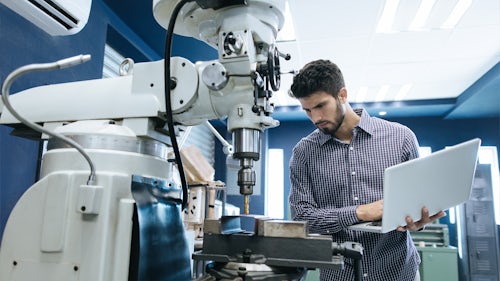Should you build your own industrial IoT platform or buy?
Smart manufacturing leverages new technologies in manufacturing environments to monitor and optimize production processes.
The Industrial Internet of Things (IoT) is reshaping global manufacturing by using data to gain unprecedented visibility and control over their production environments.
Manufacturers who embrace this new way of doing business will find themselves with a noticeable competitive advantage.
Realizing this digitalization destination, however, begins with an important decision: Should you build your own industrial IoT platform or buy one pre-built?
Pros and cons of building your own IIoT platform
When deciding whether you should build your own Industrial IoT platform or buy a prebuilt option, one of the initial steps is weighing the differences between the two choices.
Building an IIoT platform
Building an in-house IIoT platform is a complex undertaking requiring a dedicated team, which can quickly become expensive and time-consuming.
The IT department must have the experience, expertise, bandwidth, and capacity to launch, maintain, and continually develop the platform.
Companies that build their own IIoT platform typically have large IoT deployments with extensive engineering resources, and they expect to turn their IIoT platform into a differentiator.
Buying an IIoT platform
Choosing to buy an IoT platform, sometimes called an Industrial IoT development kit, from a vendor can accelerate how quickly their IoT solution gets implemented.
One of these customized pre-built solutions is less of a competitive differentiator and more of an enabling technology capable of optimizing production processes.
Buying an IIoT platform involves less risk and reduces the cost of taking the next step toward smart manufacturing.
Industrial IoT development kit
An industrial IoT development kit allows a manufacturer to ingest and process data from IoT devices and manufacturing equipment and deliver the data upstream to IIoT and third-party enterprise applications.
These kits also allow users to manage their IoT devices at scale.
Every industrial IoT development kit consists of four components: hardware, software, user interface, and the network.
Sensors collect data from various equipment and machines while gateways and data acquisition systems convert analog data to digital format.
Then, edge computing ensures on-premises preliminary data is available immediately, and cloud services provide deep analysis, processing, and storage.
All the pieces of an Industrial IoT development kit provide a one-stop-shop for implementing an IoT solution without managing developers, network configuration, and hardware engineering.
Accelerate Industrial IoT integration and time to market
In total, there are more than 650 IoT platforms to choose from, and each one claims to best support the Industry 4.0 revolution.
Choosing the right IoT partner with an Industrial IoT development kit capable of meeting all the necessary requirements is paramount when implementing an IoT solution.
Taking the time to do your research and performing the necessary work ahead of time will simplify and accelerate the implementation later.
